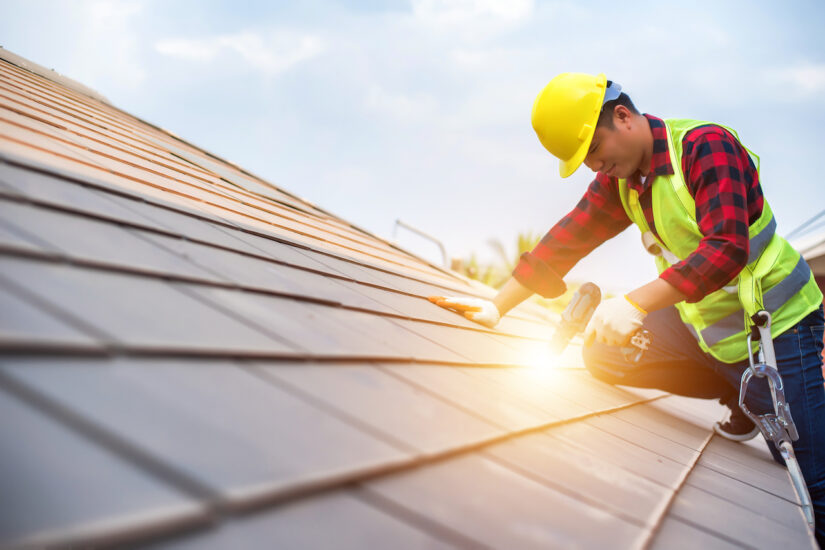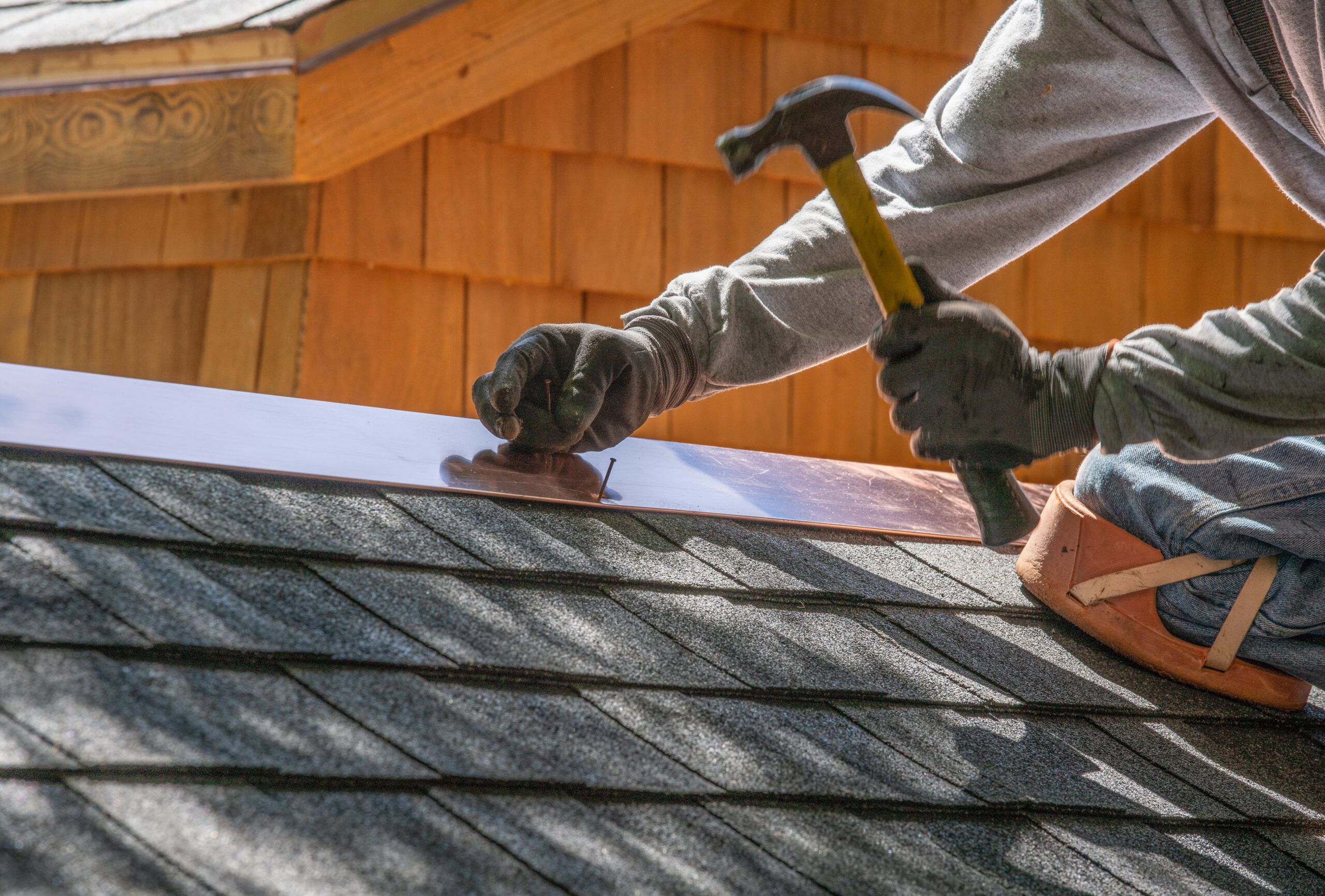Oahu Roofing: Comprehensive Roofing Services in the Oahu Area
Oahu Roofing: Comprehensive Roofing Services in the Oahu Area
Blog Article
Recognizing the Various Kinds of Roofs: A Comprehensive Overview for Homeowners
With a selection of options-- varying from the traditional gable to the modern flat-- each kind offers one-of-a-kind advantages and difficulties that ought to straighten with the house owner's environmental considerations and details demands. As we explore the intricacies of various roof types, it comes to be obvious that one size does not fit all; the ideal selection may shock you.
Saddleback Roof
Saddleback roofs, identified by their triangular form, are among the most prominent roof designs due to their simpleness and effectiveness in dropping water and snow. This layout features 2 sloping sides that meet at a ridge, permitting reliable drainage and decreasing the risk of water build-up. The high pitch commonly connected with gable roofs improves their capability to take care of heavy precipitation, making them ideal for numerous climates.
Along with their sensible advantages, saddleback roofs use visual flexibility. They can be adapted to different building designs, from traditional to modern homes. The style can likewise suit added attributes such as dormer windows, which enhance natural light and ventilation in the attic area.
Additionally, saddleback roofs provide ample area for insulation, adding to energy effectiveness. Home owners can pick from a selection of roofing materials, including asphalt shingles, steel, and tiles, further enhancing customization options.
Despite their advantages, gable roofing systems might call for extra assistance in areas prone to high winds or heavy snowfall. On the whole, the gable roofing system stays a preferred option due to its blend of capability, resilience, and visual allure.
Apartment Roofs
Flat roofing systems are typically recognized for their minimalist layout and functional applications, especially in industrial and industrial settings (oahu roofing). These roofs include a horizontal or nearly straight surface, which enables very easy building and versatile room use. While they might lack the aesthetic allure of angled roofs, flat roof coverings use various benefits, particularly in city atmospheres where making best use of area is essential
Among the primary advantages of flat roof coverings is their availability. Homeowners can use the roof area for various functions, such as rooftop gardens, terraces, or solar panel installments. Furthermore, level roofs are normally much more cost-efficient to keep and install contrasted to their sloped equivalents, as they require less materials and labor.
Typical materials utilized for flat roofing systems include built-up roof (BUR), customized bitumen, and single-ply membranes, each offering distinct benefits. Overall, level roof coverings offer as a useful and versatile option for numerous property owners and companies alike.
Hip Roofs
Hip roofs are characterized by their sloped sides that converge on top, creating a ridge. This style is unique from saddleback roofs, as all four sides of a hip roof covering incline downwards toward the wall surfaces, providing an extra secure framework. The angle of the slopes can differ, enabling convenience in building aesthetic appeals and performance.
One of the key advantages of hip roofs is their ability to endure hefty winds and unfavorable climate condition. The sloped surfaces enable far better water drainage, reducing the threat of leaks and water damages. In addition, hip roof coverings use enhanced attic room area, which can be utilized for storage space or even transformed into comfortable areas.
Nonetheless, building a hip roof can be a lot more costly and intricate than simpler roof covering types, such as gable roof coverings. The extra product and labor associated with producing the inclines and making sure proper structural honesty can result in greater expenses. In spite of these downsides, many house owners prefer hip roofing systems for their durability, aesthetic charm, and potential for energy effectiveness.
Mansard Roof Coverings
Mansard roofing systems, commonly recognized by their distinct four-sided style, attribute 2 slopes on each side, with the lower incline being steeper than the top. This building design, originating from France in the 17th century, is not only visually enticing but functional, as it takes full advantage of the functional room in the top floorings of a building. The high lower slope permits even more headroom, making it an ideal choice for attic rooms or loft spaces, which can be exchanged living areas.
Mansard roofing systems are characterized by their versatility, fitting numerous architectural styles, from typical to modern. They can be created with different products, including asphalt shingles, slate, or steel, giving home owners with a series of choices to match their preferences and budget plans. In addition, the design permits the assimilation of dormer home windows, improving natural light and air flow in the top degrees.
However, it is necessary to take into consideration the possible drawbacks. Mansard roofing systems may require more upkeep because of the complexity of their style, and their high inclines can be challenging for snow and rain drainage. Generally, mansard roofing systems incorporate sophistication with practicality, making them a preferred choice amongst property owners seeking distinctive architectural functions.
Dropped Roofings
As house owners progressively look for simpleness and performance in their building layouts, lost roof coverings have arised as a popular option. Defined by a solitary sloping airplane, a shed roof provides a minimal aesthetic that matches numerous home styles, from contemporary to rustic.
One of the primary benefits of a shed roofing is its uncomplicated building and construction, which commonly converts to reduce labor and material costs. This design allows for reliable water drainage, lowering the threat of leakages and water damage. Furthermore, the upright slope provides sufficient space for skylights, improving all-natural light within the inside.
Dropped roofing systems also provide convenience in regards to usage. They can be effectively integrated right into additions, garages, or outdoor structures like sheds and structures. In addition, this roof style can accommodate different roof covering products, including metal, asphalt view website shingles, or also eco-friendly roofs, description straightening with green initiatives.
Nonetheless, it is important to consider regional climate problems, as hefty snow tons may necessitate modifications to the roof covering's angle or structure. Generally, lost roofs present a functional and visually pleasing alternative for home owners seeking to optimize capability without endangering style.
Verdict


Gable roof browse around this web-site coverings, defined by their triangular form, are among the most prominent roofing designs due to their simplicity and effectiveness in losing water and snow. oahu roofing. The steep pitch generally associated with gable roof coverings boosts their capacity to deal with heavy precipitation, making them appropriate for numerous environments
While they may lack the visual allure of pitched roofings, flat roofing systems provide many benefits, particularly in city environments where maximizing area is critical.

Report this page